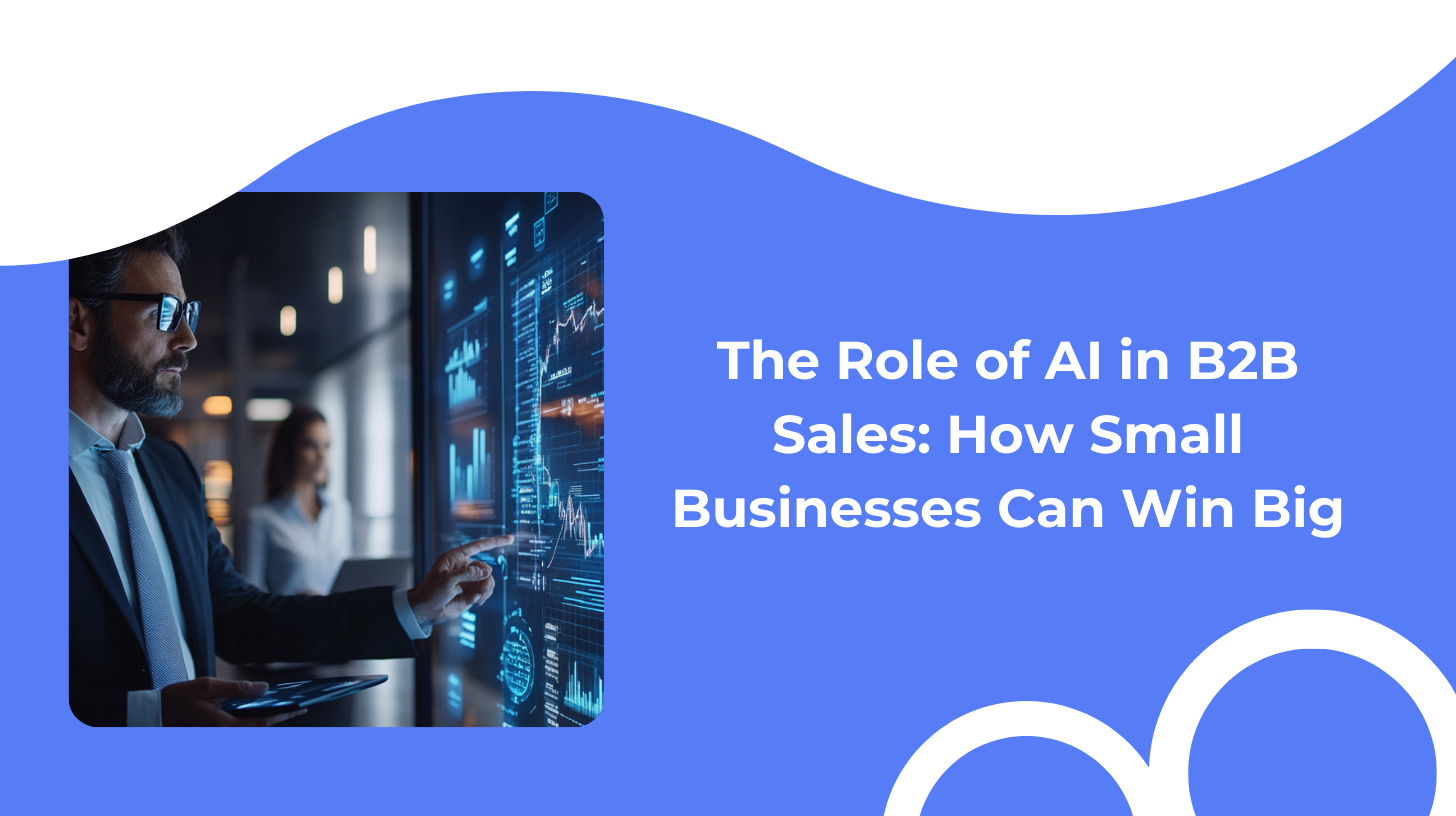- 1. Introduction: Why Small Businesses Can’t Afford to Ignore AI Digital Sellers
- 2. What Exactly is an AI Digital Seller?
- 3. Step-by-Step Guide: How to Set Up Your AI Digital Seller
- 4. AI Digital Sellers vs. Traditional Sales Teams: A Competitive Advantage
- 5. Conclusion: Why AI Digital Sellers Are a Must-Have
How to Set Up an AI Digital Seller for 24/7 Customer Engagement

Introduction: Why Small Businesses Can’t Afford to Ignore AI Digital Sellers
Let’s say you run an online store, a consulting agency, or a B2B service business. Customers browse your site, send inquiries, and consider making a purchase. But what happens after business hours?
If you’re relying solely on human sales reps, leads slip through the cracks. Unlike major corporations with round-the-clock support, small businesses often miss opportunities simply because no one is available to respond in real time.
This is where AI Digital Sellers change the game. They don’t replace human sales teams—they enhance them, ensuring every inquiry is handled instantly, whether at 2 PM or 2 AM.
What Exactly is an AI Digital Seller?
An AI Digital Seller is not just a chatbot—it’s a fully functional AI-powered sales assistant that:
✅ Engages website visitors and social media inquiries in real-time.
✅ Qualifies leads automatically, ensuring only the right prospects reach your sales team.
✅ Answers common customer questions based on a knowledge base.
✅ Books appointments or guides users to purchase decisions seamlessly.
Many business owners assume AI can’t provide the same level of customer engagement as a human. In reality, an AI Digital Seller can be even more efficient—as long as it’s set up properly.
Step-by-Step Guide: How to Set Up Your AI Digital Seller
Step 1: Define Your AI Seller’s Role in Your Sales Process
Before jumping in, clarify where AI fits best in your sales cycle. Ask yourself:
- Should it answer FAQs and reduce support workload?
- Do you need it to qualify leads before handing them off to a human rep?
- Will it be used for direct sales or appointment booking?
Example: A small IT consulting firm used AI to pre-qualify inbound leads, automatically filtering out non-ideal clients. As a result, their sales team saved 15+ hours per week by focusing only on high-value prospects.
Step 2: Build a Strong Knowledge Base
AI’s effectiveness depends on how well it’s trained. A poorly set up AI will frustrate customers, while a well-trained AI will enhance the sales experience.
✅ Compile a list of FAQs customers often ask.
✅ Define common objections and best responses.
✅ Include pricing details, service descriptions, and appointment scheduling info.
Example: A manufacturing company selling custom windows built an AI-driven support system. By training the AI with technical specs and order processing details, they increased service request bookings by 275% within two months.
Step 3: Customize AI Sales Scripts & Lead Qualification Questions
Your AI shouldn’t sound robotic—it should guide customers like an experienced sales rep.
✅ Use natural, conversational language in responses.
✅ Set up lead qualification sequences (e.g., budget, needs, decision-making timeline).
✅ Ensure AI recognizes when a human should step in for complex inquiries.
Some businesses hesitate to implement AI, fearing it will sound too robotic. But with the right scripting, AI can feel just as personal and engaging as a human rep.
Example: A consulting agency integrated an AI Digital Seller into their CRM. When a returning lead visited their website, AI referenced their past inquiries, making the conversation feel highly personalized.
Step 4: Connect AI to Your CRM & Sales Tools
To maximize efficiency, your AI Digital Seller must sync with your CRM (HubSpot, Salesforce, Pipedrive, etc.).
✅ AI should track customer history and previous conversations.
✅ AI should update CRM records in real time, preventing data loss.
✅ AI should be able to hand off leads to human reps seamlessly.
Common Mistake: Many businesses set up AI without CRM integration, leading to scattered data and inconsistent follow-ups.
Step 5: Launch, Monitor, and Optimize
AI isn’t a “set and forget” tool. Businesses that fine-tune their AI over time see the best results.
✅ Test AI responses with real customer scenarios before full deployment.
✅ Track key metrics:
- Response time (should be instant)
- Lead qualification accuracy
- Conversion rates from chat to booked appointments or sales
✅ Continuously update AI’s knowledge base with new insights from customer interactions.
Example: A textile e-commerce store launched an AI Digital Seller and, within 60 days, optimized its product recommendations based on customer conversations—leading to a 20% increase in online conversions.
AI Digital Sellers vs. Traditional Sales Teams: A Competitive Advantage
Many small business owners hesitate to adopt AI, assuming it’s costly or impersonal. But let’s compare:
| Traditional Sales Team | AI Digital Seller |
| Limited to business hours | Works 24/7 |
| Requires salaries & commissions | Costs 20-30% of a sales rep’s salary |
| Can’t engage every lead instantly | Responds in real time, reducing lead drop-offs |
| Inconsistent knowledge sharing | Always delivers precise information |
AI doesn’t replace human sales teams—it allows small businesses to scale without hiring more staff.
🚀 Businesses using AI Digital Sellers today are already outperforming competitors who rely only on manual sales teams.
Conclusion: Why AI Digital Sellers Are a Must-Have
- Small businesses can now engage customers 24/7—just like large corporations.
- AI Digital Sellers ensure no lead is left waiting, no inquiry goes unanswered.
- When implemented correctly, AI doesn’t just support sales—it boosts revenue and efficiency.
🔥 Want to see how an AI Digital Seller can work for your business? Book a free demo and start converting leads 24/7 today!

9 min for reading


